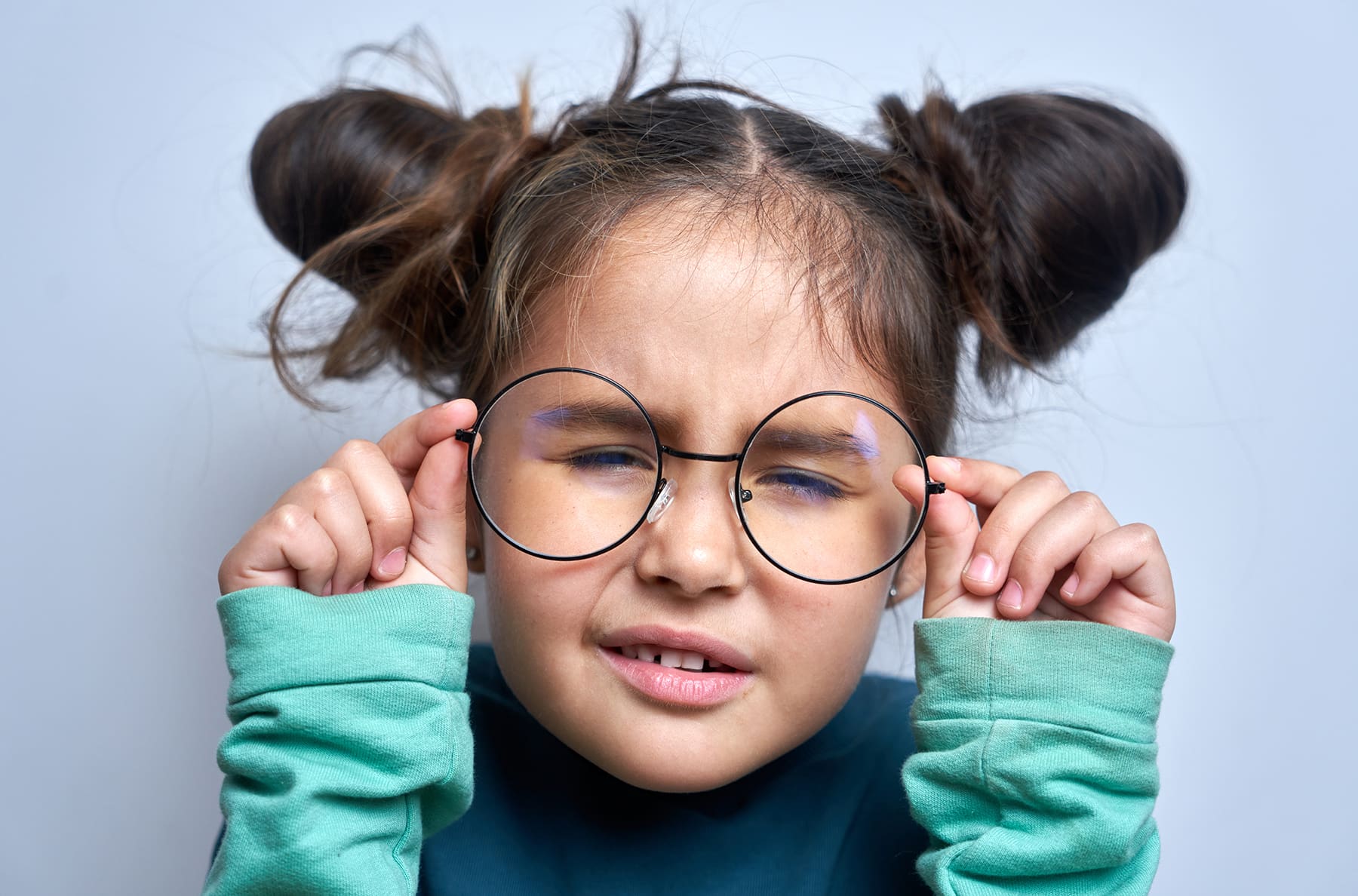Reviewed By Dr. Jodi Kuhn
Reading time: 4 minutes
If your child squints to read, gets frequent headaches, or complains of blurry vision, especially for close-up tasks, they may have a combination of hyperopia and astigmatism.
These are refractive errors, meaning the eye does not bend incoming light properly to create a clear image. These conditions are common, treatable, and often overlooked in growing children.
In this blog, you will learn what astigmatism and hypermetropia means, how it affects your child’s vision, what symptoms to look out for, and how Youth Vision can help.
Youth Vision provides comprehensive vision care for kids and adults at our locations in Denver, Aurora, Hampden and Thornton.
Table of Contents
Key Takeaway
Hypermetropia and astigmatism can make everyday learning difficult for your child. If your child has frequent headaches, squints at school, or struggles with focus, it’s time for a professional eye exam. Youth Vision offers Medicaid-covered care and friendly, expert treatment to keep your child’s vision on track..
What Is Astigmatism and Hypermetropia?
Astigmatism and hypermetropia (also called hyperopia) are two different refractive errors that can occur together.
- Hypermetropia (farsightedness): This means your child sees distant objects clearly but struggles with nearby objects like reading, writing, or looking at screens. Their eye shape causes light to focus behind the layer of tissue called the retina.
- Astigmatism: This occurs when the cornea (the front surface of the eye) has an irregular shape, causing distorted vision or double vision. It results from an irregular curvature of the cornea or lens. It can occur as myopic astigmatism, hypermetropic astigmatism, or irregular astigmatism.
When combined, your child may experience both close-up vision and distance vision problems along with eye strain and fatigue.
Symptoms of Hyperopia and Astigmatism
These signs can be subtle, especially in young children who may not realize they are seeing the world differently. Look out for:
- Blurry or distorted vision: Especially when switching between near and far objects.
- Eye strain: Rubbing eyes, blinking often, or closing one eye to focus.
- Headaches: After school or close-up activities.
- Difficulty reading: Skipping lines or words, holding books too far away.
- Poor school performance: Caused by vision issues and concentration problems.
- Double vision: Complaints about the quality of vision.
How Youth Vision Diagnoses These Conditions
Regular eye exams are key. At Youth Vision, we perform a comprehensive eye exam tailored to children, using:
- Visual acuity testing to check clarity at various distances.
- Retinoscopy and refraction to identify the exact refractive errors and prescription.
- Keratometry to measure the irregular curvature of the cornea for astigmatism.
- Eye alignment tests to rule out related eye conditions such as strabismus.
Early diagnosis means easier treatment and fewer struggles in school and at home.
Treatment Options for Astigmatism and Hypermetropia
There are several ways to manage these vision issues, depending on your child’s age, lifestyle, and the severity of their prescription. Here are the most common options:
- Corrective lenses: Prescription eyeglasses tailored to correct both hypermetropic and astigmatic components. Some children only need them for reading; others wear them all day.
- Contact lenses: A great option for older kids or teens involved in sports. Toric lenses correct astigmatism, and multifocal lenses can help with complex prescriptions.
- Refractive surgery: Options like laser eye surgery may be discussed for teens or adults once the eye has finished growing.
- Vision therapy: In some cases, vision therapy can improve focus, eye coordination, and reduce eye strain.
Can Kids Outgrow Astigmatism or Hypermetropia?
Some children may experience minor changes as they grow, but most kids do not outgrow refractive errors like astigmatism or hyperopia. Left untreated, these conditions can lead to:
- Amblyopia (lazy eye)
- Struggles with reading and schoolwork
- Low self-esteem related to performance or vision
- In rare cases, complications like retinal detachment due to severe uncorrected eye conditions
This is why regular eye exams and checkups with an eye doctor are essential, even if your child hasn’t complained about their vision.
Schedule Your Child’s Eye Exam Today
Vision problems often go unnoticed in children, especially when they can’t explain what they see. That’s why the American Optometric Association recommends scheduling your child’s first eye exam at six months old, again at age three, and every year after they start school.
Early detection is the key to preventing long-term vision challenges and supporting learning success.
At Youth Vision, we offer:
- Comprehensive eye exams for kids of all ages
- Diagnosis and treatment of refractive errors like hyperopia and astigmatism
- Eyeglasses and contact lenses customized for children
- Medicaid-friendly care at every location
We welcome families at four convenient locations:
- Denver Youth Vision, located at 1400 Grove Street, Denver, CO 80204, 303-825-2295
- Aurora Youth Vision, located at 14251 E. 6th Avenue, Aurora, CO 80011, 303-343-3133
- Thornton Youth Vision, located at 9674 Washington Street, Thornton, CO 80229, 303-953-880
- Hampden Youth Vision, located at 7400 East Hampden Ave. Unit C1, Denver, CO 80231, 720-866-9906
FAQs About Hypermetropia and Astigmatism
Is hyperopia the same as farsightedness?
Hyperopia, also known as farsightedness, is a common type of refractive error where distant objects appear clearer than nearby objects. This happens when the eyeball is too short or the cornea has too little curvature, causing incoming light to focus behind the retina instead of directly on it.
Can a child have both hyperopia and astigmatism?
Yes, many children have both, and each condition needs to be corrected with a specific lens shape.
Do glasses cure these conditions?
Glasses improve visual acuity by correcting how light enters the eye, but they do not cure the underlying condition.
How often should my child get an eye exam?
Once a year, or sooner if symptoms arise. Kids grow fast, and their vision development can change quickly, especially during school years when their eyes are adjusting to increasing visual demands.


